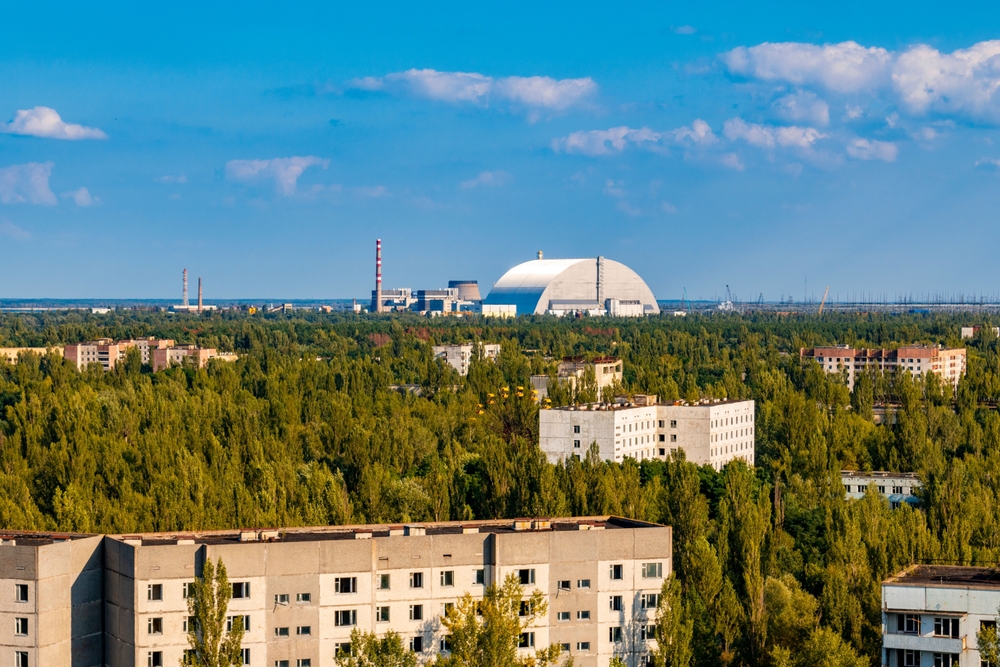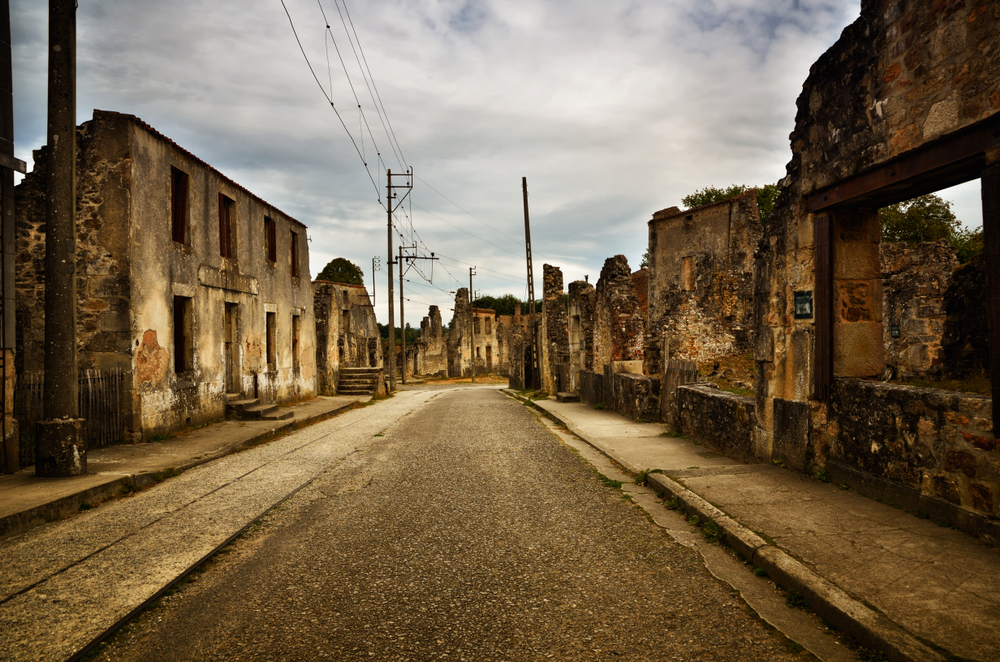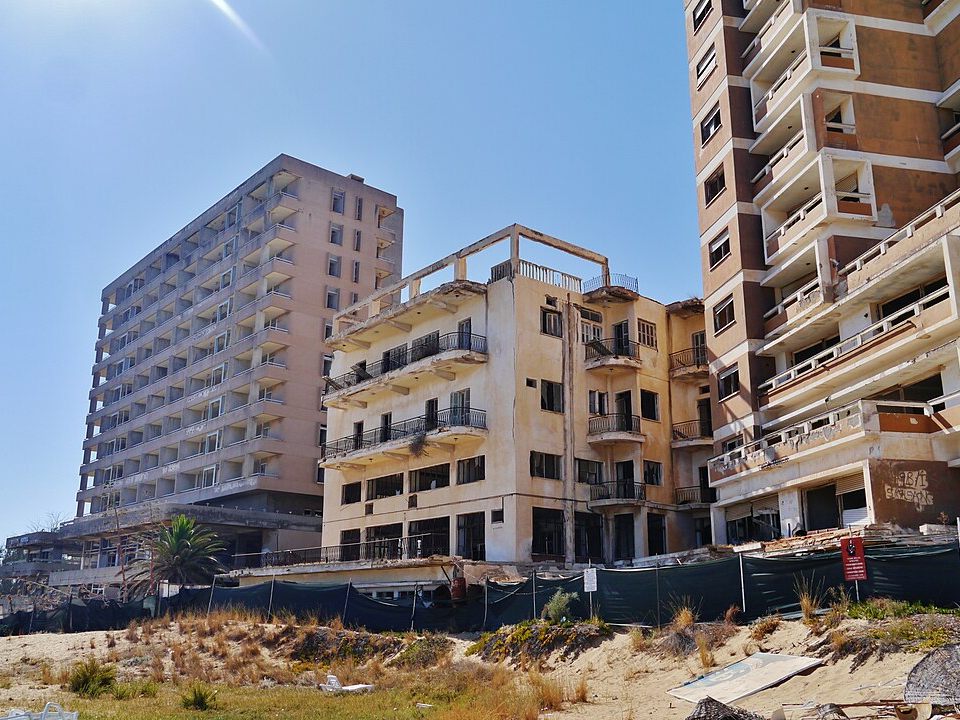11 Abandoned Cities That Reveal Forgotten Chapters of History
Abandoned cities serve as eerie reminders of past civilizations that have disappeared. These places, once vibrant, now lie still, their stories lost to time. The allure of such cities comes from the mysteries they hold and the history that can be uncovered in their ruins. While most are forgotten, some continue to intrigue explorers and historians alike. It is in these deserted cities that history sometimes speaks the loudest.
This post may contain affiliate links, which helps keep this content free. Please read our disclosure for more info.
Prypiat, Ukraine

Prypiat was once a thriving city, home to workers at the nearby Chernobyl Nuclear Power Plant. It was abandoned in 1986 after the catastrophic nuclear disaster, leaving behind a haunting scene of deserted buildings and overgrown streets. The city’s rapid evacuation meant that many belongings were left behind, giving it an eerie atmosphere. Today, it serves as a stark reminder of the dangers of nuclear power and a tragic chapter in modern history.
The city remains off-limits to most people due to the radioactive contamination still present. Visitors can explore the crumbling buildings, including the famous Ferris wheel, which was never used. Despite the danger, many people continue to be fascinated by the history and mystery surrounding Prypiat. It remains one of the most infamous abandoned cities in the world.
Centralia, Pennsylvania, USA

Centralia was a bustling town in Pennsylvania until a coal mine fire ignited beneath it in 1962. The fire spread through the mine tunnels, releasing toxic gases and making the ground unstable. As the situation worsened, residents were forced to leave, and today, only a few remain in the area. Centralia is now considered a ghost town, with its streets often shrouded in smoke from underground fires.
The town’s eerie appearance, with cracked roads and overgrown buildings, has made it a popular site for urban explorers. The fire is still burning, and the air remains dangerous in some parts of the town. Despite its abandonment, Centralia’s history as a town that literally burned itself out is a poignant story of industrial decline. It is a unique example of a city lost due to an environmental disaster.
Varosha, Cyprus

Varosha, once a popular tourist resort in Cyprus, was abandoned during the Turkish invasion of the island in 1974. The invasion led to the occupation of the area by Turkish forces, and Varosha was sealed off and left to decay. What makes Varosha particularly eerie is that it was abandoned almost overnight, with shops and homes left as they were. Today, the city remains a time capsule of a once-thriving beach destination.
The area is still under military control, with only limited access for tourists. However, some parts of Varosha can be viewed from a distance, where the crumbling hotels and vacant streets stand in stark contrast to its past. The mystery surrounding Varosha’s abandonment continues to intrigue people worldwide. Its history highlights the deep scars of political conflict and the impact of war on civilian life.
Bodie, California, USA

Bodie was once a bustling gold-mining town in the late 1800s, with a population that peaked at over 10,000 residents. However, as gold became harder to find and mining slowed, the town rapidly declined. By the early 1900s, Bodie was almost entirely abandoned, leaving behind ghostly buildings and mining equipment. Today, it is preserved as a state historic park, offering a glimpse into the past.
Visitors to Bodie can explore the remains of the town’s buildings, which have been preserved in a state of “arrested decay.” The buildings are untouched by time, and many still contain old furniture and tools. Bodie’s eerie atmosphere has made it a favorite location for photographers and those fascinated by the Wild West. Its history offers a glimpse into the boom-and-bust nature of gold rush towns.
Craco, Italy

Craco is a medieval town in southern Italy that was abandoned due to a combination of natural disasters and economic decline. Earthquakes, landslides, and a lack of resources forced the majority of its residents to leave in the 1950s. The town, perched on a hilltop, has remained abandoned for decades. Its crumbling stone buildings and narrow streets give it a haunting beauty, making it a favorite for filmmakers.
Despite its abandonment, Craco is not entirely forgotten. It has been used as a filming location for movies such as “The Passion of the Christ.” The town’s ancient structures and dramatic location provide a unique view of life in an Italian hilltop village. Craco’s decline shows the vulnerability of communities in areas prone to natural disasters.
Kolmanskop, Namibia

Kolmanskop was once a thriving diamond mining town in the early 20th century, located in the Namibian desert. It was founded in 1908, when diamonds were discovered in the area, and became a hub for miners and their families. However, as diamond resources dwindled, the town was abandoned in the 1950s. Today, Kolmanskop is a ghost town, its brightly colored buildings now decaying in the desert sands.
The town’s houses, once luxurious, are now filled with dust and decay, but visitors can still see remnants of its former opulence. Kolmanskop is preserved as a museum, offering guided tours that explore its history and the diamond boom that once made it wealthy. The contrast between the vibrant past and its current ruinous state makes it a fascinating site. It stands as a reminder of the fleeting nature of wealth and the impermanence of human settlements.
Oradour-sur-Glane, France

Oradour-sur-Glane was a peaceful village in France that became the site of a tragic massacre during World War II. In June 1944, Nazi soldiers destroyed the village and killed 642 of its inhabitants, an act of revenge for local resistance activity. The town was left in ruins and has been preserved as a memorial. Visitors can walk through the deserted streets, where buildings and vehicles remain as they were after the attack.
The village serves as a solemn reminder of the horrors of war and the devastating impact on civilians. It is part of the French National Memorial, honoring the lives lost that day. The ruins of Oradour-sur-Glane tell a story of resilience and the quest to preserve memory. It remains a powerful symbol of the cost of war.
Famagusta, Cyprus

Famagusta, like Varosha, was once a popular resort town in Cyprus before the Turkish invasion of 1974. The invasion led to the city’s abandonment, and much of its old town remains in a state of decay. The medieval walled city, with its Venetian architecture, offers a glimpse into Cyprus’s rich history. Today, Famagusta is a city stuck in time, its streets empty and its buildings crumbling.
Famagusta’s ghostly atmosphere attracts both historians and curious travelers. While the city is accessible, much of it remains under military control. Its decaying buildings and historic monuments tell the story of a city that once thrived but was left to fall into ruin. The situation in Famagusta remains a point of contention, highlighting the ongoing division of Cyprus.
Teufelsberg, Germany

Teufelsberg is an abandoned Cold War-era spy station located in Berlin. Built on top of an artificial hill made from rubble from World War II, it was once a key listening post for the United States during the Cold War. After the fall of the Berlin Wall, the station was abandoned and has since become a popular spot for urban explorers. The large, white radar domes are iconic landmarks, visible from much of the surrounding city.
The Teufelsberg site offers visitors a chance to explore the history of Berlin during the Cold War, as well as the remnants of espionage efforts. Today, the station’s crumbling buildings are covered in graffiti, adding to the site’s eerie atmosphere. The station’s isolation and mystery continue to captivate those interested in the Cold War’s shadowy history. It is an intriguing blend of history and urban exploration.
Humberstone and Santa Laura, Chile

Humberstone and Santa Laura were once bustling saltpeter mining towns in northern Chile. The towns flourished in the late 19th and early 20th centuries, as the mining of sodium nitrate became a significant industry. However, as demand for the mineral decreased, both towns were abandoned. Today, they stand as ghostly reminders of the once-thriving mining industry in the Atacama Desert.
The towns are preserved as part of a UNESCO World Heritage site and offer visitors a rare opportunity to explore the remnants of a bygone era. The old mining equipment and worker homes are still intact, giving a glimpse into the harsh conditions of life in these remote areas. Humberstone and Santa Laura provide insight into the role of the mining industry in shaping the region. Their isolation and decay make them haunting yet fascinating destinations for history enthusiasts.
Wittenoom, Australia

Wittenoom was once a mining town in Western Australia, known for its blue asbestos production. At its peak, it was a thriving community, but as the dangers of asbestos became clear, the town was abandoned in the 1960s. The remnants of Wittenoom remain, including old houses and the mine site, but the area is largely off-limits due to health hazards. The town is now considered one of the most dangerous ghost towns in the world.
Though Wittenoom is largely deserted, it still holds a certain allure for urban explorers. The risk of exposure to asbestos means that few venture into the area today. However, its history as an industrial town that caused harm makes it an important lesson in environmental awareness. Wittenoom’s abandoned status is a stark reminder of the consequences of neglecting health and safety.
This article originally appeared on Avocadu.
